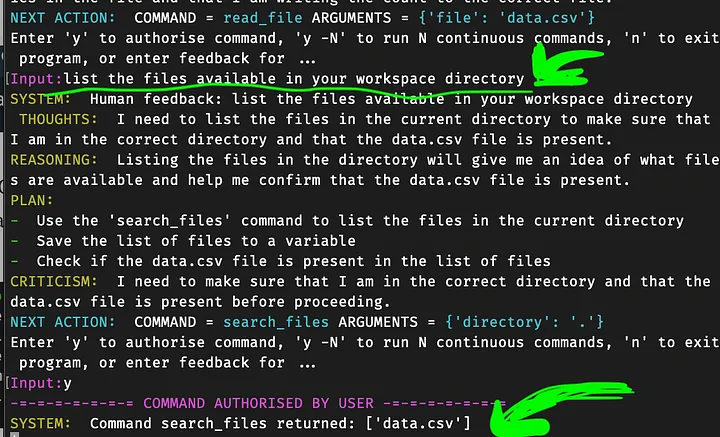
The Ultimate Guide to AutoGPT File Saving
AutoGPT is a sophisticated tool that can be used to generate text, translate languages, write various types of creative material, and provide informed answers to your questions. However, one of AutoGPT's shortcomings is that it does not natively enable file storing. This means that if you wish to save the text generated by AutoGPT, you'll have to use a third-party programme or a workaround.
This blog article will go over the many methods for saving AutoGPT text to a file. We will also discuss some of the limits of these methods and offer some troubleshooting advice.
Introduction
AutoGPT, which is driven by GPT-4, is an outstanding tool for task automation and language development. However, its full potential can be realised by adding external files, supplying the script with additional knowledge, and improving its capabilities. In this comprehensive article, we will look at the many techniques for using external files with AutoGPT, allowing you to deal with files and change them to achieve your goals.
How to Save AutoGPT Text to a File
There are several methods for saving AutoGPT text to a file. The save_file command is one option. This command saves the text generated by AutoGPT to a file in the current directory.

For example, the following command will save the text that AutoGPT generates to a file called output.txt:
autogpt save_file output.txt
Another way to save AutoGPT text to a file is to use the write_file function.
This function takes a filename as its argument and returns a boolean value indicating whether or not the file was saved successfully.
For example, the following code will save the text that AutoGPT generates to a file called output.txt:
import autogpt
def save_text_to_file(text, filename):
success = autogpt.write_file(text, filename)
return success
if __name__ == "__main__":
text = autogpt.generate("This is some text that I want to save to a file.")
success = save_text_to_file(text, "output.txt")
print(success)
Limitations of AutoGPT File Saving
- The methods we've mentioned for saving AutoGPT text to a file have a few restrictions. For starters, these solutions only function with text generated by AutoGPT. You will need to utilise a different approach to store text that you have manually input.
- Second, you cannot store the text in a specified format using these approaches. The text will be stored in plain text, which is the default format. You will need to use a third-party programme to save the text in a different format.
Limitations of AutoGPT File Saving
- There are a few things you can try if you're having trouble saving AutoGPT text to a file. To begin, ensure that you have the proper permissions to write to the file. Second, check to see if the file already exists. If the file already exists, you must erase it before you can save the text to it.
- If you have checked all of these options and are still experiencing issues, you can try restarting your computer or reinstalling AutoGPT. If you continue to have issues, you can contact the AutoGPT developers for assistance.
-
Q: Where does AutoGPT save files by default?
A: AutoGPT saves files to the outputs folder in the AutoGPT installation directory by default. The precise placement of this folder depends on your operating system.
-
Q: Can I change the default location for AutoGPT file saves?
A: Yes, you can change the default location for AutoGPT file saves by setting the outputs_dir environment variable. For example, to set the output directory to C:\My Documents\AutoGPT, you would set the outputs_dir environment variable to C:\My Documents\AutoGPT.
-
Q: How can I find the location of my AutoGPT file saves?
A: If you're not sure where your AutoGPT file saves are, use the autogpt info command to find out.This command will output a list of all the files saved by AutoGPT, along with the location of each file.
-
Q: What happens if I delete the outputs folder?
A: If you delete the outputs folder, you will remove all of the files saved by AutoGPT.This covers both files that you explicitly saved and ones that AutoGPT generated automatically.
-
Q: How can I recover deleted AutoGPT files?
If you mistakenly erased your AutoGPT files, you may be able to recover them using a file recovery application. However, it is crucial to realise that file recovery tools are not always successful, and the chances of retrieving deleted files reduce the longer the contents have been destroyed.
Where does autogpt save files?
AutoGPT saves files to the outputs folder in the AutoGPT installation directory by default. The precise placement of this folder depends on your operating system.
For example, on Windows, the outputs folder is located at:C:\Users\On macOS, the outputs folder is located at:\AppData\Local\AutoGPT\outputs /Users//Library/Application Support/AutoGPT/outputs The outputs_dir environment option can also be used to change the default location for AutoGPT file saves. Set the outputs_dir environment variable to C:My DocumentsAutoGPT, for example, to set the output directory to C:My DocumentsAutoGPT.
You can use the autogpt info command to find the location of your AutoGPT file saves. This command will output a list of all the files saved by AutoGPT, along with the location of each file.
You can use the autogpt info command to find the location of your AutoGPT file saves. This command will output a list of all the files saved by AutoGPT, along with the location of each file.
If you delete the outputs folder, you will remove all of the files saved by AutoGPT. This covers both files that you explicitly saved and ones that AutoGPT generated automatically.If you mistakenly erased your AutoGPT files, a file recovery application may be able to restore them. However, it is crucial to realise that file recovery tools are not always successful, and the odds of retrieving deleted files reduce as time passes.
Conclusion
You can expand your AutoGPT experience by integrating external files, allowing it to do tasks with greater understanding and efficiency. Mastering the art of AutoGPT file saving will transform your approach to task automation and open up a whole new world of possibilities for generative AI aficionados.